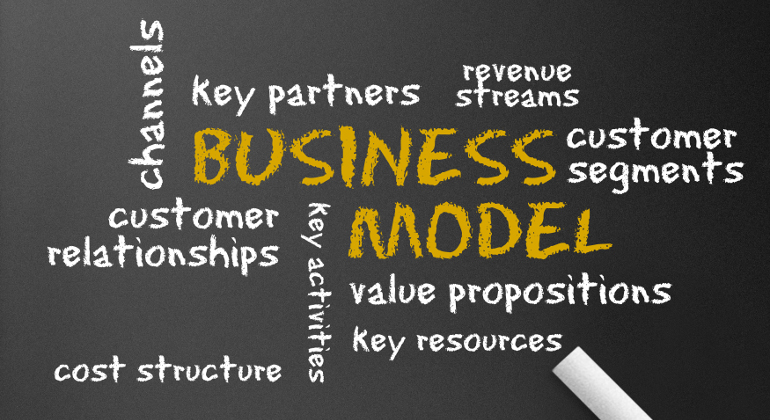
3 Business Model Attributes that Could Make your Startup Struggle
More than anything I consider myself a pragmatist. I strive to see things for what they really are.
As a pragmatist, I prefer to take the path of least resistance. This does not mean that I shy away from hard work. On the contrary, I embrace the fact that to achieve anything significant in this world, hard work is the bare minimum of what is needed.
When it comes to achieving a specific outcome though, I always want to take the shorter path. Again, this does not mean cheating or going outside the law.
It means evaluating rationally all the available options and going with the one that is going to require the least amount of resources (time, money, effort etc.). If you are thinking about efficiency, you are on the right track.
Translating this approach into the world of business, it means that you want to achieve a great outcome (for example exploding revenue) with the minimum amount of effort, time, hustle and resources as possible.
It only makes sense, doesn’t it? Well yes, if you strip away every possible aspect of emotion, it does.
Over the years, from my personal experience and from the studying I have done, I have identified some attributes in one’s business model that might cause extra friction and even bring the venture to its knees.
In this article, I am going to discuss some of these attributes, explain how they can burden your business, and propose some alternatives.
Now, before I get into the details of each one, let me be clear on something: it does not mean that a business is bound to fail if it incorporates one (or more) of them.
It does not even mean that it is a lousy business or that it can’t turn into a great one. It just means that you are going to face extra friction into scaling it and that you need to be aware of the issues and get prepared for them.
Are you ready? Let’s go straight into it.
Want to get my eBook "From Employee to Online Entrepreneur" as a nice PDF? Download it below!
1) You are dealing with physical products
Yeap. You knew this one was coming. If you are a regular reader of this blog, you already know about my affection for online businesses.
The digital era we live in has allowed entrepreneurs to create new business models that bypass the limitations of the physical world.
Let’s take for example the business model of a publisher. In the old times, you had to pick promising writers, take a gamble on them, print their book a few thousand times, distribute it on bookstores and then pray for them to be sold. In the best case scenario, you would sell each book to only one person.
Thankfully, this business model has evolved and now you may handle a plethora of writers, distribute their books effortlessly via online platforms and you can sell each book to thousands of readers without additional costs. If the book is purchased by one person or by one million people, your cost is the same, thus your profits can be exploding. Don’t you love this kind of leverage?
Dealing with physical products can be painful. You have to move them around, they can break, they take time to reach the customer and usually come with tiny profit margins.
On the other hand, digital products can scale infinitely, they reach consumers instantaneously, they take zero shelf-space and typically come with insanely high profit margins.
2) You do not have Recurring Revenue or your Customer Lifetime Value is low
If your business model is one where you can’t get repeat business from your customers, you are going to struggle. If you only sell to people in a “once-off” manner, you are doomed to spend tons of money to acquire a new customer, only to have them buy from you once and thus limiting their value to you to a very low amount.
This situation can occur due to a variety of reasons. It might be because of the nature of your business model or it might be because your product or service is of low quality and people refrain from purchasing again.
Whatever the case, you need to find a way to address the problem, either by changing your model, or by improving the quality of your offering, or by doing both.
For example, if you are selling a physical product, you should think about introducing a line of products closely related to the original one, so that you may cross-sell to your customers.
In the digital world, you could arrange Joint Ventures (JVs) with other companies that you share common target groups with, and promote each other’s products to each other’s audiences.
What you should keep in mind is that you always have to figure ways to increase the lifetime value of your customers.

3) You have a long Cash Conversion Cycle
Cash Conversion Cycle (CCC) refers to the length of time (usually in days), that it takes for a company to convert resource inputs into actual cash flows.
More simply, it measures how fast a company can convert cash into inventory and accounts payable, through sales and accounts receivable, and then back into cash.
With CCC, one may gauge the effectiveness of a company’s management and the overall health of that company.
Let’s see an example to highlight this.
Amazon allows third party sellers to sell their product on its massive platform, thus leverage their amazing infrastructure.
By the way the arrangement works, Amazon stores their products into its warehouses and takes care of the fulfillment of the orders.
In this scenario, when a buyer visits the Amazon website and makes a purchase, Amazon collects the cash up front by the buyer, and pays the third party seller after 60 days!
During that period, Amazon essentially gets cash for free and can deploy them to productive means (e.g. online advertising), while the seller needs to wait and actually fund his inventory with his own capital.
In this simplistic example, Amazon has a negative CCC while the seller has a long CCC of two months!
The way to reduce your Cash Cycle is to pay your Accounts Payable as late as possible and receive the cash from your Accounts Receivable as early as possible.
Conclusion
In this article, I presented three aspects of a business model that might cripple your startup or business venture.
First, we have the issue of having physical products. Dealing with the physical world introduces major friction in your efforts and should be done after careful consideration.
Next, we discussed the topic of recurring revenue and, more generally, how a customer’s lifetime value may impact your business.
Finally, we talked about the idea of cash conversion cycle and how it affects your company’s cashflow management.
Again, having some, or even all, of these attributes does not mean that your venture is doomed. I can bring several counter-examples for each one of them.
What it means is that, you need to be able to identify them and work around them to make your business successful.




